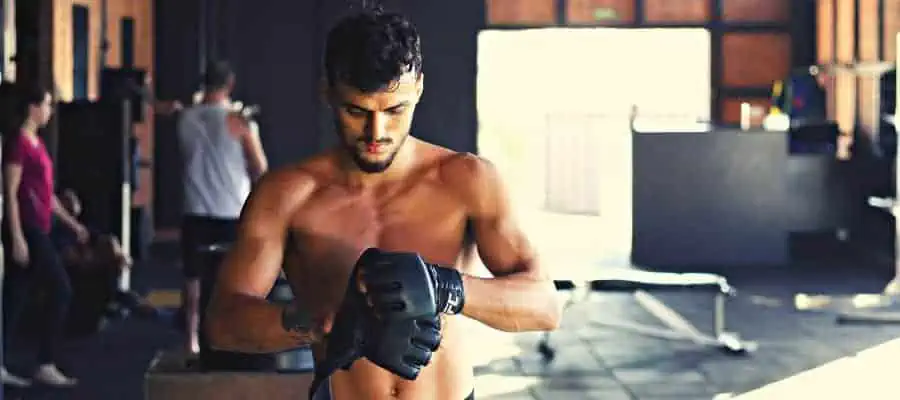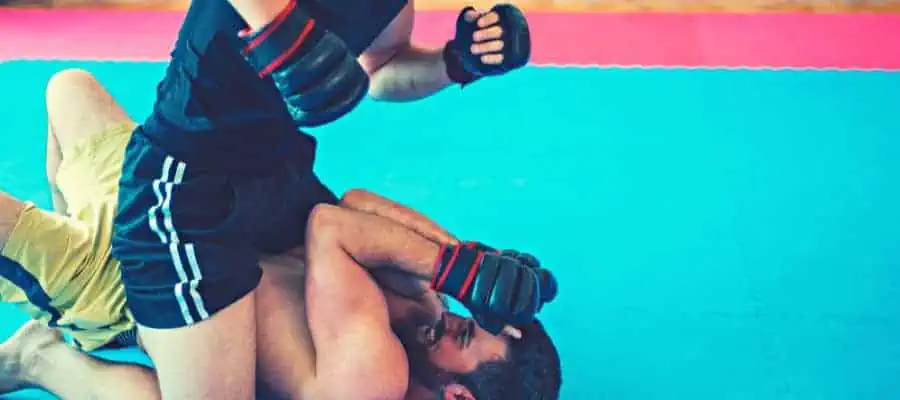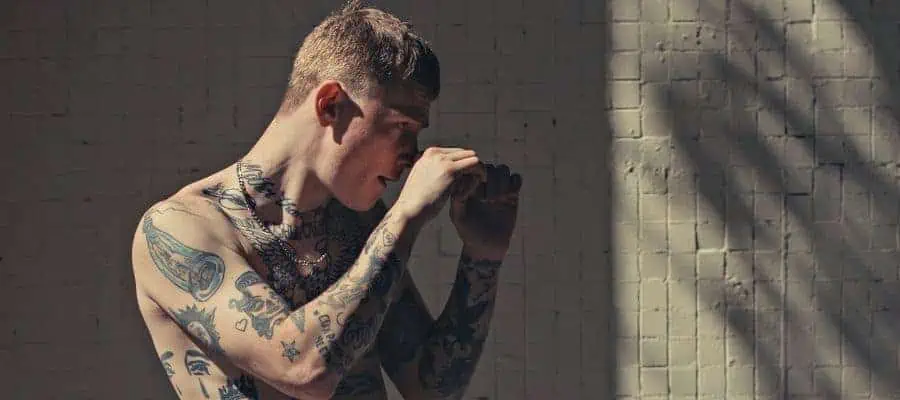Whenever people start their martial arts journey, it’s usually for one of two major reasons: staying in shape or self-defense. And while some martial arts do teach you ways to truly defend yourself, the self-defense world is a sea of false techniques that do not prepare you for the sobering reality of a dangerous situation. In this article, we’ll investigate the true dangers of street fighting and how martial arts can only prepare you for so much.
Most Martial Arts Are Idealistic

All over YouTube and social media at large, we see different people attempting to show self-defense “techniques.” Most of these techniques don’t take much into account. This is seen most in arts like hapkido, kung-fu, and savate. If you try to make some of these moves out in the street with a truly aggressive person, you’ll find out quickly just how ineffective they are.
Not all martial arts are like this, such as boxing, jujitsu, judo, or muay thai. However, these arts still contain an idealistic vision because you are always fighting with another player of the same game. UFC 1 was designed to once and for all prove which art will prevail when pitted against each other.
The winner was Brazilian Jujitsu because non-grapplers had no idea how to react to grappling techniques. Over the years, MMA has developed into a highly intensive sport where each fighter must understand at least the basics of striking and grappling.
A street fight is closer to an MMA fight in our modern context, where if you don’t understand a given dimension of fighting that your opponent does, you will lose. The big problem with that is that MMA is done in a ring, one-on-one, with a referee and time limits. In the street, it’s a different story.
Anything can happen. So not only must you understand the complexities of fighting, but you must also understand what trick(s) your opponent(s) may use.
Violence Is Different Than Fighting

If someone truly wants you hurt, they will do anything in their power to hurt you. This is a shocking experience, to say the least, and it will catch you off guard if you aren’t prepared. People who have been attacked usually tell horrifying stories about getting their heads slammed against a wall, jumped by five men, or stabbed in the face.
These are all examples of that primal fighting instinct some people have. You could imagine a semi-strong man attempting to hurt you, for example. Most of the time, when doing this thought experiment, you probably imagine a cool, action-movie-style scene where you fend him off with a spinning back fist or something like that.
This is not how it works. I encourage you to take a moment and close your eyes and try to imagine what it would be like to be attacked by a crazed man with nothing to lose. Suppose you truly put yourself in that scenario.
In that case, you can understand, simply by way of imagination, that it’s easy to underestimate the violent nature of humankind. True violence is nothing like the controlled environment of the gym or the ring. It is much more dangerous, not to mention worse, than something out of a horror film.
Many Fighters Are Unassuming

No matter where you live, a martial arts gym is usually in the locale. And where there’s a gym, there’s a master. Many great martial artists (mainly grapplers) don’t look the part. Just look up the grand masters of any style; they are old, frail-looking men who are capable of much more than you would expect.
Against a casual or even an advanced practitioner, these men have skills that overshadow most fighters’ abilities. To take it a step further, most of the black belt jujitsu masters are regular middle-aged men, and their skills are unparalleled in the general population.
Now, I should mention that most high-level strikers look the part. It’s very hard to progress in something like Muay Thai or Boxing without getting big shoulders and an admittedly intimidating build. However, as a martial artist, you may assume that how strong someone looks has nothing to do with their actual skill level.
This assumption can be a detrimental one. The following notion is one to remember: do not assume that simply because you practice an art, you are the best out there; there is always someone better. And it may be the manager at the local Mcdonald’s.
Weapons Beat Hands

There are innumerable amount of videos across the internet of people losing fights. As the winner walks away, they pull out a pistol or knife. Leandro Lo, a world-class jujitsu fighter, is a perfect example of this. While at a nightclub in Brazil, a man went up to Lo’s table and took one of his drinks in an attempt to start a fight.
Lo took him down and mounted him until he had no choice but to stop fighting back. He let the guy up, and next thing you know, Lo was shot in the head. He died tragically that night at 33 years old. Situations like this just go to show that no matter how good you are at martial arts, someone with a real vendetta can and will hurt you.
What’s worse is that this is how disputes are often settled nowadays. Street fights and bar brawls are a thing of the past. If someone wants you hurt, it only takes a split second for them to end your life, whether with a knife, a gun, or even a rock from the ground. It just goes to show: weapons beat bare hands, even if you’re one of the best fighters in the world.
Concrete Hurts More Than Mats

Let’s imagine for a second that someone comes up to you aggressively in the street. You, a well-versed grappler, decide to take him to the ground where you are comfortable. You shoot in for a double-leg, and as soon as he hits the ground, Snap.
If your arm is underneath his body, you risk crushing it between his full weight and the hard concrete. But what if your arm is fine? You’ll continue to try and advance position, advancing your passing game. You’re scraping up your knees, but it doesn’t matter; you fight through the pain.
You go for a seatbelt back take; this time, your arm is not at risk, but your head. If you hit your head on concrete in a fast-paced fight, things might not go well for you. This is a real problem. I’ve seen (granted only once) a couple of guys fighting, one guy went for a throw, and the other tried to put him in a front headlock.
He ended up spiking his head on the ground, going unconscious. Again, no matter how good you are, there are risks in fighting on the street that you can’t/don’t prepare for in the gym. These scenarios may be rare, but the cost is extremely high and most likely not worth taking.
You Can’t Fight Off Twelve Guys

Having a good group of friends is deeply satisfying and rewarding for someone in life. It’s also a sort of insurance policy in public. People tend to feel safer with their buddies around, and justifiably so. If one of the friends is attacked unexpectedly, the others can either jump in, or they can break up the fight to keep anyone from getting hurt.
A more malicious group, however, presents a big danger if they decide to go after a lonely individual. We’ve all seen the movies where Bruce Lee fights off countless foes, but we also see that he only gets attacked by one or two guys at a time.
This is misleading since they all should be attacking him at once if they wanted to win. A group of three men could likely take him out if they overwhelmed him. No real martial art prepares you to fight off a group of attackers; if even one of them is armed, it won’t be much trouble for them to hurt you.
This point is a big reminder to stay cognizant in public, especially if people seem up to no good. If you notice they have a friend (or twelve friends) with them, you may want to de-escalate the situation.
Most People Are Casual Fighters

So you’ve been practicing for two years and won several local tournaments. Maybe you even had a “fight night” with your buddies and won. Confidence in you is growing, perhaps more than it should. Most people are not even on the amateur level; they may be closer to the casual level.
Martial arts skill is a classic example of the Pareto distribution. This statistical concept shows what’s commonly called the 80-20 rule. It means that in many social phenomena, 80% of the work is done by 20% of the people. In other words, 80% of martial artists only hold 20% of “skill.”
Mathematically, the vast majority of practitioners are not in the skilled minority. IBJJF estimates that there are only 6,000 black belts in the world, and that’s a very small amount compared to the countless white, and colored belt fighters there are.
All of this to say, the only thing separating the common person and the average jujitsu guy is a year or two of training. While this is significant on the mats, their overconfidence may get them hurt.
Environment Matters

The gym has no obstacles, rocks, angry girlfriends, bouncers, or busy streets. If you are cognizant, you can avoid getting hurt by so many things around you. Imagine you step back to avoid a punch, and you step into a hole.
This is the unpredictable nature of the environment at large. Imagine once more that you are starting to win a fight, and your opponent’s girlfriend tries to pull you off of him by the hair. Now you have to negotiate a situation that just got ten times more complicated.
One of the biggest environmental factors is the police. If they get involved with what is going on, that spells trouble. All of these variables play into what could happen around you and not even within the confines of the fight.
Gyms don’t train for this. Maybe you’ll train for a wall or clothing, but not any of the unpredictability that is the environment. To mitigate this, the only thing that can be done is to have awareness within and outside the fight itself. This can and will be distracting for you, hence the title of this article.
People Are Hard To Incapacitate

Most people don’t have knockout power like Mike Tyson, and some people have tough chins like Nick Diaz. It’s a gamble which one you come across, and if they are the ones initiating the fight, they probably have some quality that makes them think they’re tough.
As you may know, some people can be beaten to a pulp and continue to fight as if nothing happened. You might leg-kick someone ten times, and they walk it off. These kinds of people exist; one of them is probably at your gym.
Yes, everyone has a breaking point; we’re all human. But my point is that some people have a breaking point far exceeding the norm. And if they’re picking a fight, I would bet on that being the case. This is another point going into the unpredictable nature of who you are against.
You could be naïve and assume that who you’re up against is a slouch that you can easily beat, but that could be the assumption that gets you hurt. In keeping with the theme, never assume that you can knock out the guy coming at you. Even if you’re Mike, he had some fights that went the distance (only 7 out of 56 total).
Beginners Are Weird

Anyone who’s grappled with a day one white belt or sparred with a friend knows that beginners don’t fight by the rules; they don’t know how. Brand-new people are usually squirmy and panic a lot, making them hard to grapple with.
When it comes to striking, they fight unorthodoxly, making them harder to read. This can and will backfire on you, the so-called “expert.” Some people attribute it to “beginner’s luck,” but I call it “beginner’s expertise.” This is an obvious overstatement, but it speaks to the nature of what is happening. Beginners have their instinct, that’s all.
It is lucky if they manage to get the upper hand on you, but not because it was entirely accidental. It has to do more with you underestimating, put together with their strange movements. You have an idea where they’re going next since you were a beginner at some point, but you never know for certain.
Those times when it is uncertain, you may end up losing the advantage or worse. Regular people in the street count as beginners, so this rule is universal when coming across an inexperienced attacker.
Conclusion
To conclude, we can look to someone who has seen and experienced great violence and is a martial artist himself, Jocko Willink. He has said time and time again that the best self-defense is running away. Not much is worth the risk of street violence, so if you cannot diffuse the situation with words, run. Carrying a weapon to protect you and your friends or family is also worthwhile.
When it comes to the worst situations, you’d rather have a weapon than not. And this is not to denigrate the utility of martial arts; it is a good practice for the mind, and you have a better chance to defend yourself than the layperson. So don’t take this as a reason to quit your practice, as you’ll miss out on one of life’s greatest treasures.
Recent Posts
What is Manachai's Fighting Style? Unveiling Muay Thai Mastery
Manachai, a celebrated figure in the Muay Thai world, has captivated audiences with his exemplary martial prowess. Hailing from the heartlands of Thailand, his name is synonymous with the art of...
What Was Chamuekpet Hapalang's Fighting Style? Unveiling Techniques
Chamuekpet Hapalang was a renowned figure in the world of Muay Thai (record 200-48-2), embodying a fusion of Muay Bouk and Muay Khao styles. Originating from Thailand, the art of Muay Thai is known...
